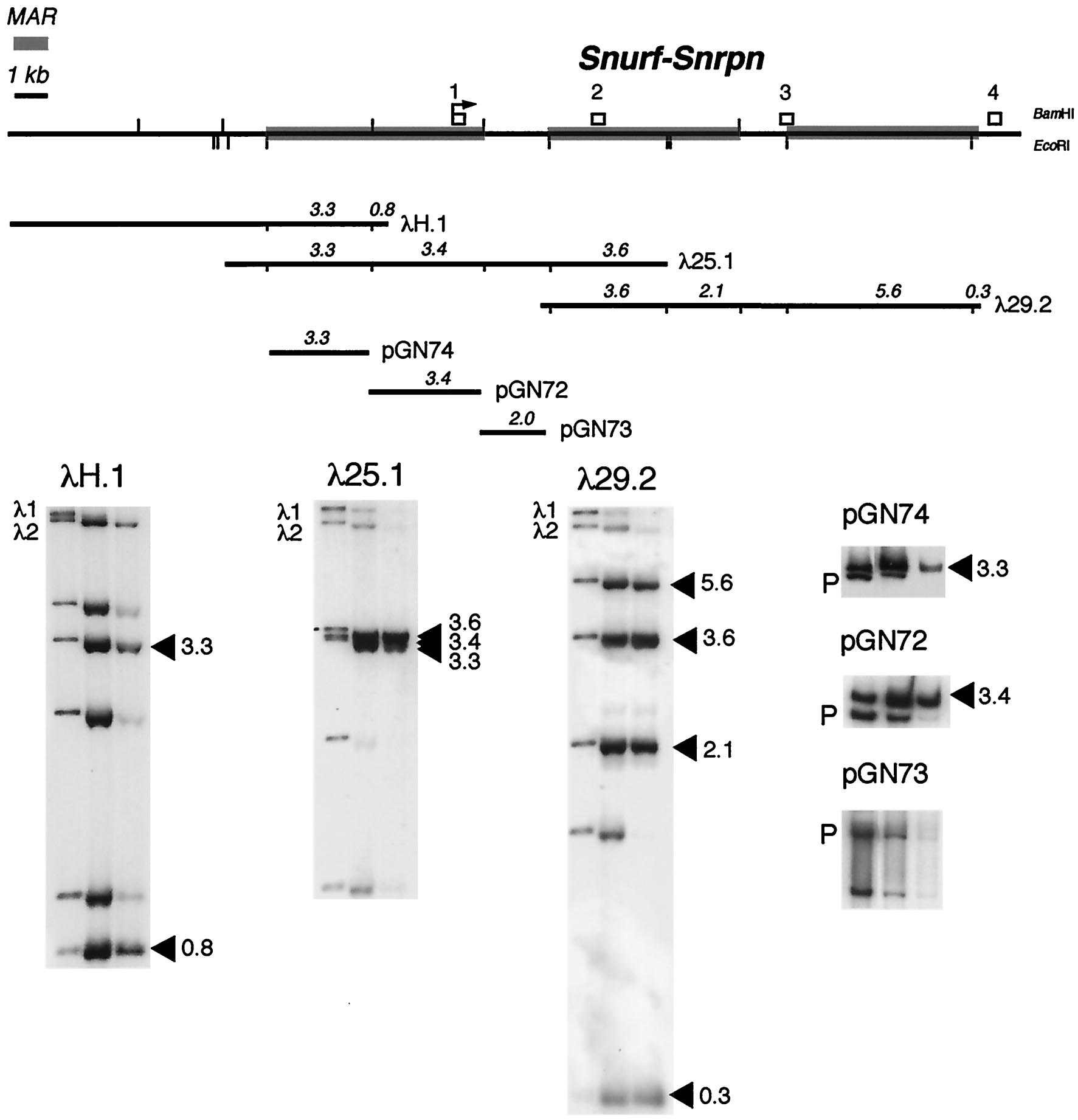Supplementary material for Greally et al. (1999) Proc. Natl. Acad. Sci. USA 96 (25), 14430-14435.

Fig. 7.
Each of the phage clones from the mouse Snurf-Snrpn locus was digested with EcoRI-BamHI. Interassay consistency was again observed. To resolve the cluster of bands of l25.1, plasmid subclones were separately analyzed. The upstream pGN74 and pGN72 bands are strongly positive in this assay, whereas the 3.6-kb band (containing exon 2) is readily resolved in the l29.2 assay and is also positive. For comparison, pGN73 (second smallest band from l25.1) is negative in a plasmid subclone assay, as it is in the phage assay of l25.1. The mouse Snurf-Snrpn locus is organized by MARs in a manner similar to the human locus, with a high density of MARs (18.0 kb of 29.4 kb assayed) and a similar sparing of the immediate exon 1/intron 1 region of SNURF-SNRPN.